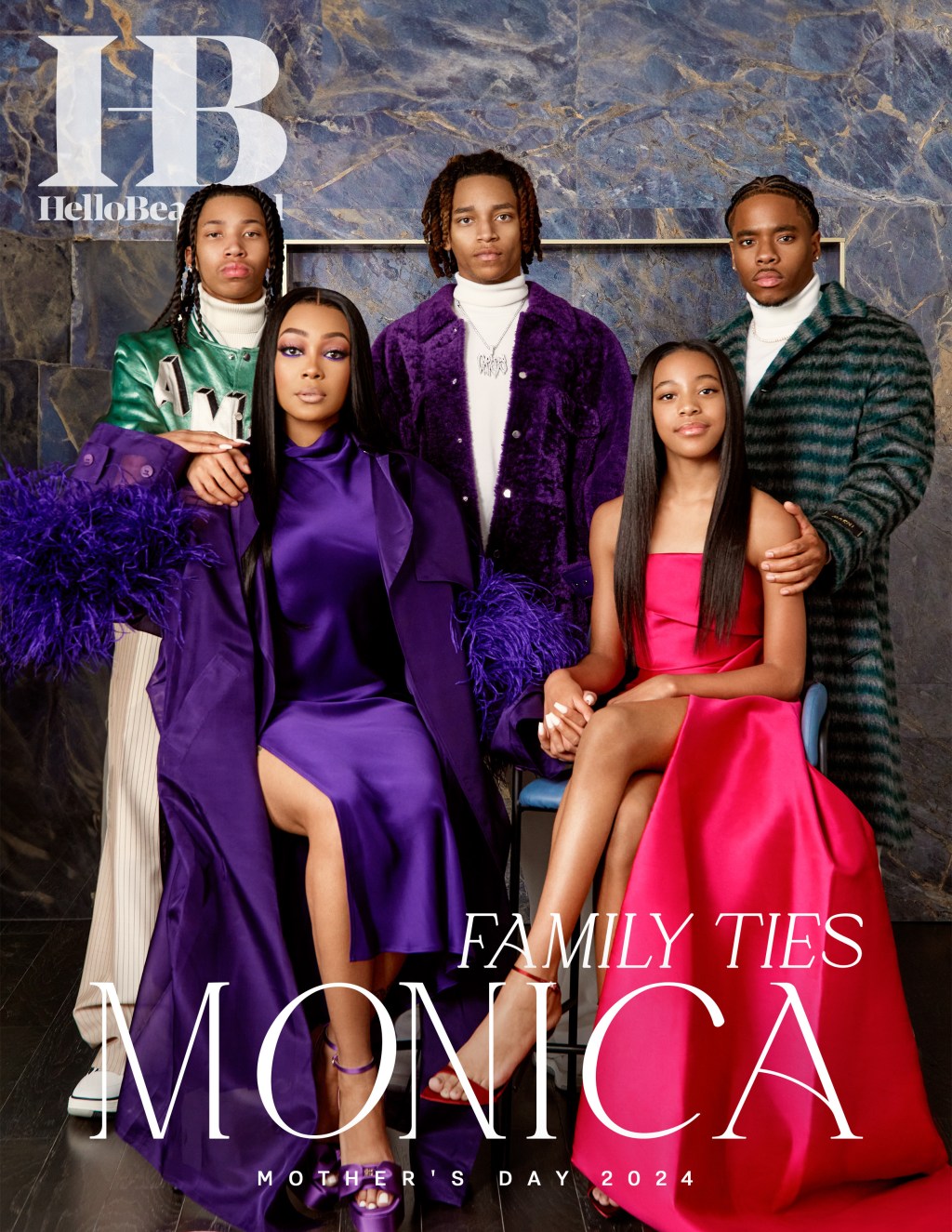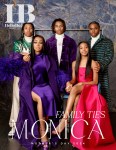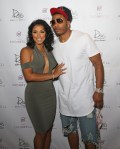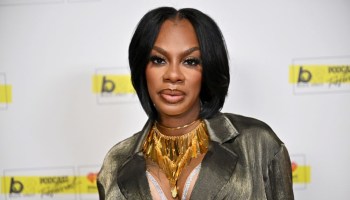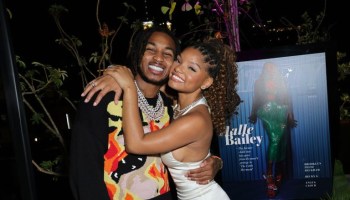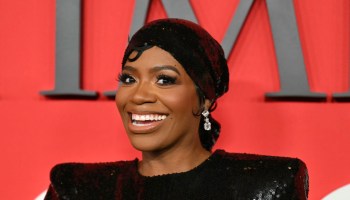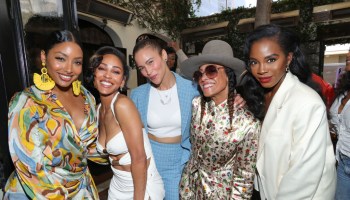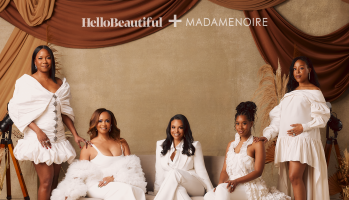We meet in his work studio, not his showroom. As I walk through Murray Hill in New York City, I arrive at a huge brownstone building. I can’t help but think of all the creative history in this neighborhood. Famed artist Andy Warhol held his studio, dubbed ‘The Factory’ within walking distance. Jean-Michele Basquiat and Madonna would smoke cigarettes on the corner. Beneath the bustle of 20-something-year-old professionals and bars, there is a creative antiquity in this area. I breathe deeply, I’m about to meet fashion designer, Byron Lars.

Source: Cindy Ord / Getty
Byron Lars is a staple in the fashion industry. He began designing under his own label in 1991 and was instantly received by Anna Wintour. Women’s Wear Daily, after his first collection, named him “Rookie Of The Year.” He continued to break barriers and make strides in fashion for people of color. He’s been Barbie’s designer since 1997 and most notably, responsible for having a dark skin Barbie added to Mattel’s assortment. Byron’s line, Byron Lars Beauty Mark is sold in many high-end retailers ranging from Bergdorf to Bloomingdales. He even produces a line exclusively for Anthropolgie, which they describe as “walking a careful line between coquettish and ladylike, his polished pieces prove nearly universally flattering.”
I ring the doorbell and am greeted by the ever-so-friendly Sheila, his right hand and gatekeeper. Everything is clean, pristine, actually. I walk past his team, Sheila introduces me and I’m warmly greeted by all. She leads me down a hallway and we begin to descend stairs. Sheila casually, almost mischievously, turns around and states, “We could have done this in the showroom, but this is where you’ll get to really see Byron in his element.” I smile, not exactly sure what she means, but I dare not ask. Byron Lars is about the work, not the fame. Ever-so-private, when Sheila said he agreed to an in-person interview and on-camera, we did it as quickly as possible. Almost as if we thought the opportunity would dissipate.
My heart beats, excitedly, as if I’m going on a first date. I’m about to meet a legend. She opens the door and I walk into fashion fusion. I take in the space: fabric boards, mannequins adorned in beautiful dresses, patiently waiting for the final detailing. I see sketches. There’s a work table and on his wall, amidst Vogue and all-things-fashion, handmade cards from his niece or nephew, pouring out their love for “Uncle Byron.” His studio reminds me of the late Yves Henri Donat Mathieu-Saint-Laurent, the man behind YSL. Saint-Laurent’s work studio, unlike his collection, was a mash-up of organized chaos. It’s a similar feel with Byron Lars. My eye goes to one of the tables, falling upon a dress request from none other than Golden Globe winner Taraji P. Henson. At no point in our interview, does Byron ever make mention of this.
“Hi!” I hear a male voice say enthusiastically.
I jump, almost as if I’ve been caught snooping. “I’m Byron,” he smiles warmly as he emerges from a back room. I instantly feel comfortable. His head is wrapped in a colorful scarf and his glasses are a pattern-party of tortoiseshell and stripes. His signature. Naturally, he’s busy, in the midst of a model call for his Fall/Winter 2016 Lookbook. The model leaves and Sheila gives her a small parting gift. Picking up on my quizzical expression, she explains, “No one leaves here without a small little gift. It takes nothing to brighten someone’s day and I feel as if I’m a vessel for God.” Experiencing Byron Lars is like getting into the toughest club in New York City. The line is long and the velvet rope is present, but once in, you are well received.
RELATED: People Behind The People: Caribbean Makeup Artist Walks Own Path To Success
He examines the next model, looking at the fit of the garments, taking a step back, coming close, and smiles with satisfaction. The model looks thrilled at his approval. In between models arriving, Byron is working diligently on a sequined piece.
“Creativity is an evolution.”
At a young 51, Byron is aware that, with social media and bloggers, times are changing and designers are changing. Nevertheless, as a staple in the industry, he is not fazed, but is unbothered. While he is making things for the consuming public and the culture, he throws out the noise, reminding himself he has the permission to do so. He exclusively tells HelloBeautiful,
“When you do it and it’s authentic, people feel the love and respond to it. That’s what designers today don’t get. But when you don’t remember a time when that was a standard, how do you access it? When you say, ‘I designed that,’ I respond, ‘No you didn’t. You lifted it from the Internet and put a collar on it.’ The definition of design will change in 10 years.”
Social media affects the creative process. For a man that has been in the industry for almost half of his life, he knows all about changes in the industry. “There is a thing as too much information,” he peers at me intently through his spectacles, almost as if he’s checking to see if my Millennial nature is even fully aware that access to information has become indulgent. Byron continues,
“Even the whole dynamic of the foxy designer…designers by nature, they are nerds. They are insular people. They didn’t get picked for kickball in school. They had to live inside and live in their imagination and make things. They are not cool people. They are not all these things that are commanded of them, to be the brand ambassador. That’s not what designers are by nature. We are kind of freaks. Right now, the culture won’t allow for that and it’s not natural.”
I listen intently, noting that he used only pronouns, but then included himself in the end with the inclusive, ‘we.’ I awkwardly blurt out, “Do you realize you are cool?!” He bursts into laughter and confesses,
“Oh, I’m not cool.”
It was one of those things that only ‘cool’ people effortlessly say. Almost as if they are so engulfed in their coolness, they don’t recognize it because it’s not an act, or a show; it just is. He might not think he’s cool, but Michelle Obama does. Cool enough that she wore him in the 2011 official family photo. You know, the one that’s hanging in almost every Black person’s home? Not too many designers can say their clothes have been in the Oval Office.
Why does Michelle rock his clothing? It’s all about the fit.
“So many clothes are made to get you to swipe your credit card because they look great on the hanger or whatever. The truth of the matter, great clothes that really fit the body, often times don’t look great on the hanger, they need the body in it to make it work.”
Going forward, if I like the color or just get a generally good feel about a piece, despite how it looks on a hanger, I’m going to try it on. Why? Because Byron Lars says so. In a direct contrast to what we see on most runways (waif-like models, with the clothes hanging off of them like hangars), Byron Lars is here for the everyday woman.
“I don’t feel like I have the right to brag. It’s not me, it’s through me. It’s something bigger than me. I’m a worker. The vessel. I love that.”
Byron Lars broke barriers and boundaries, paving the way for designers of today like LaQuan Smith, Michael Costello, Charles Harbinson, Undra Celeste and more. Innovative and a visionary, Byron is not a staple in this industry, but a foundation.
DON’T MISS:
#NYFWNoir: Everything You Need To Know
American Girl To Release A Black Activist Doll And We Are So Here For It
A Lesson In Selfie Confidence: Ty Hunter’s Tips To A Flawless Photo
